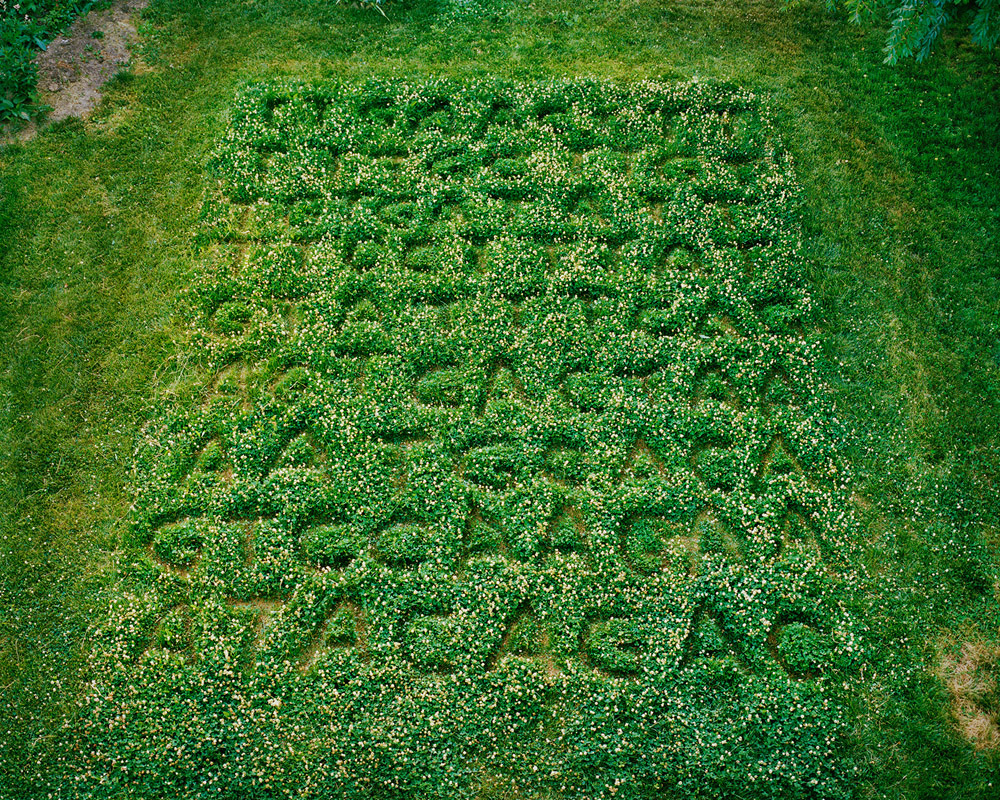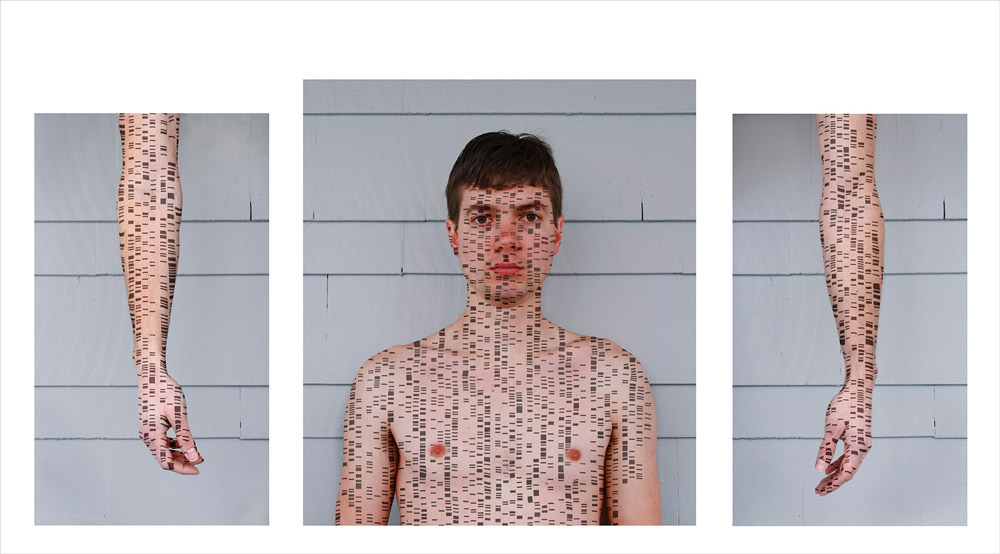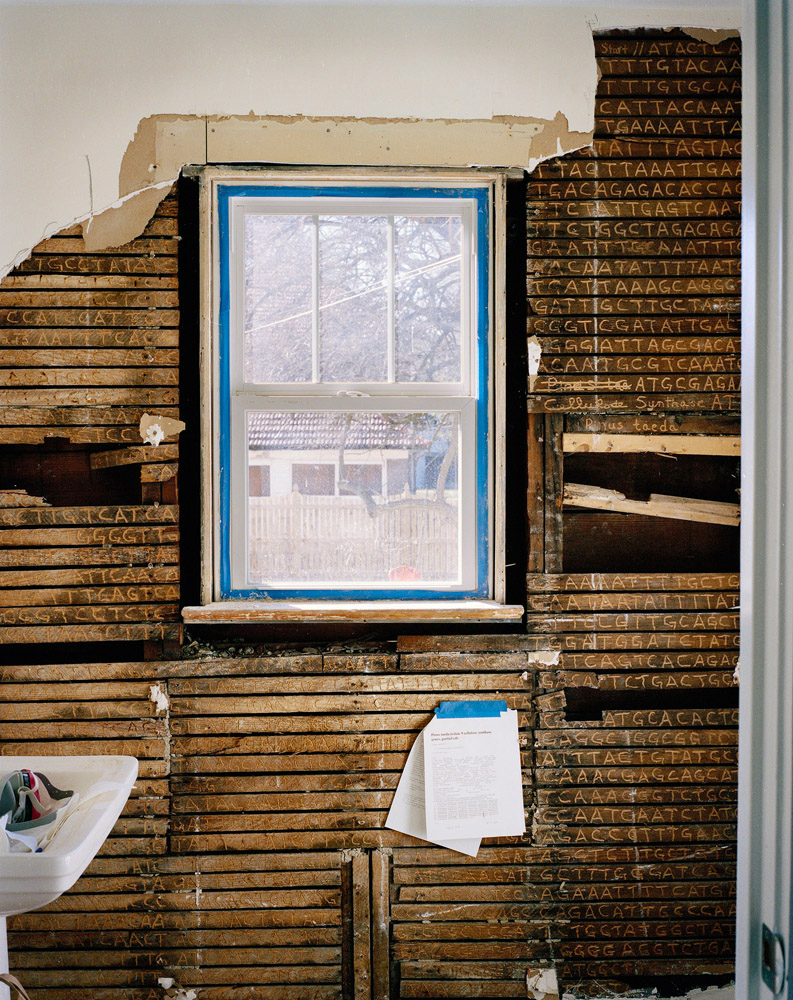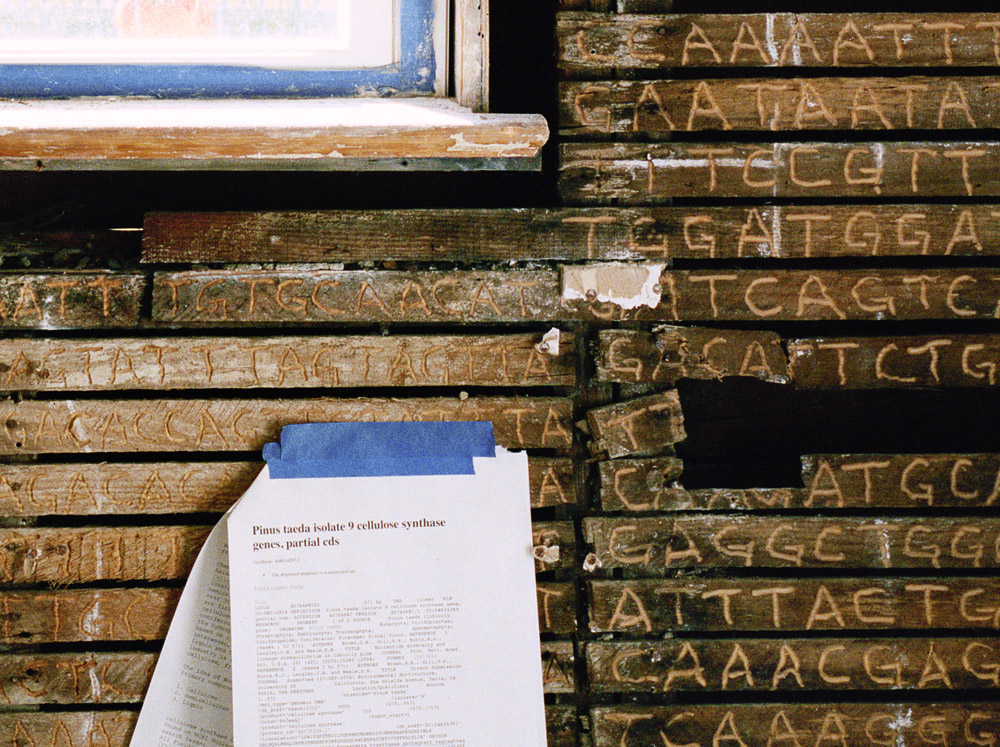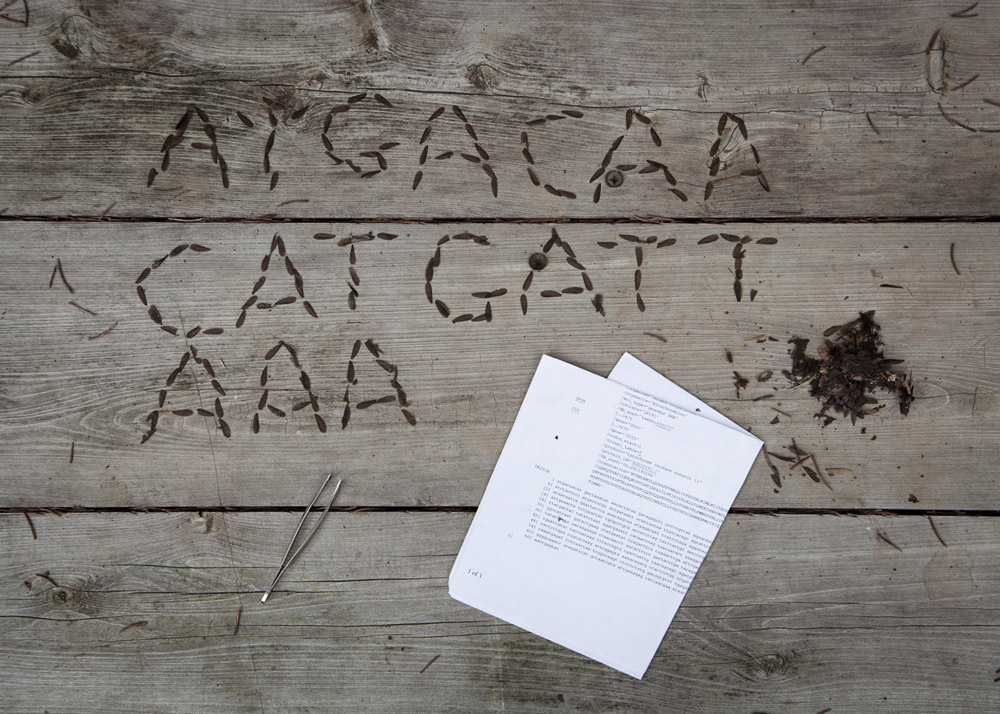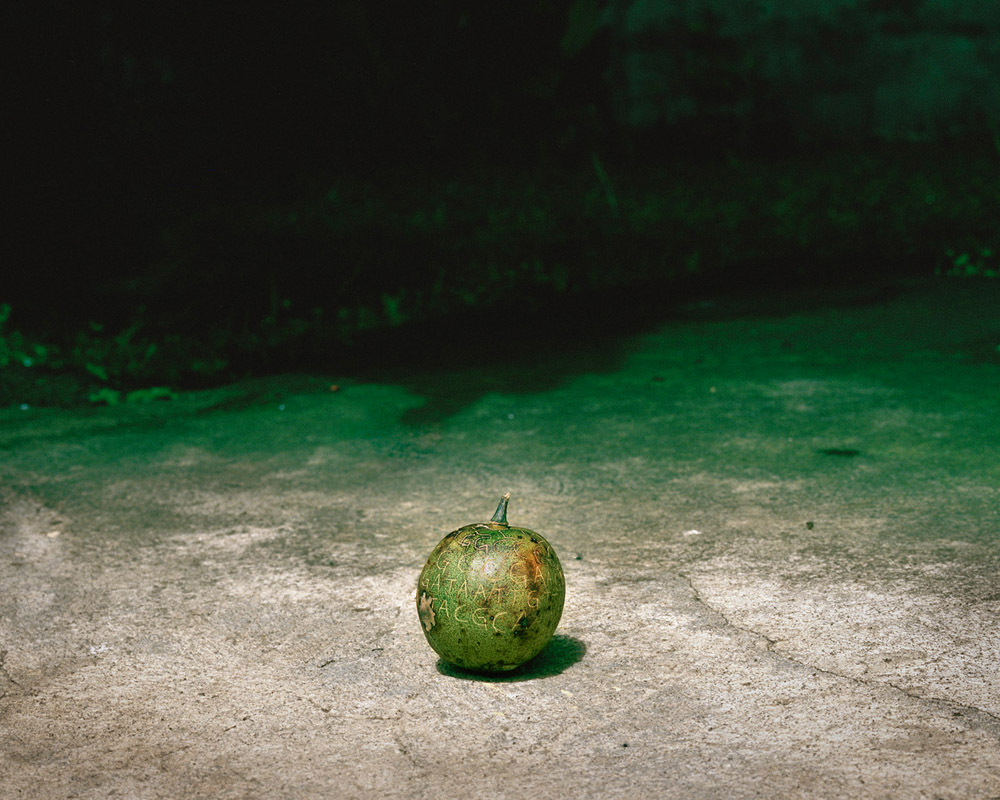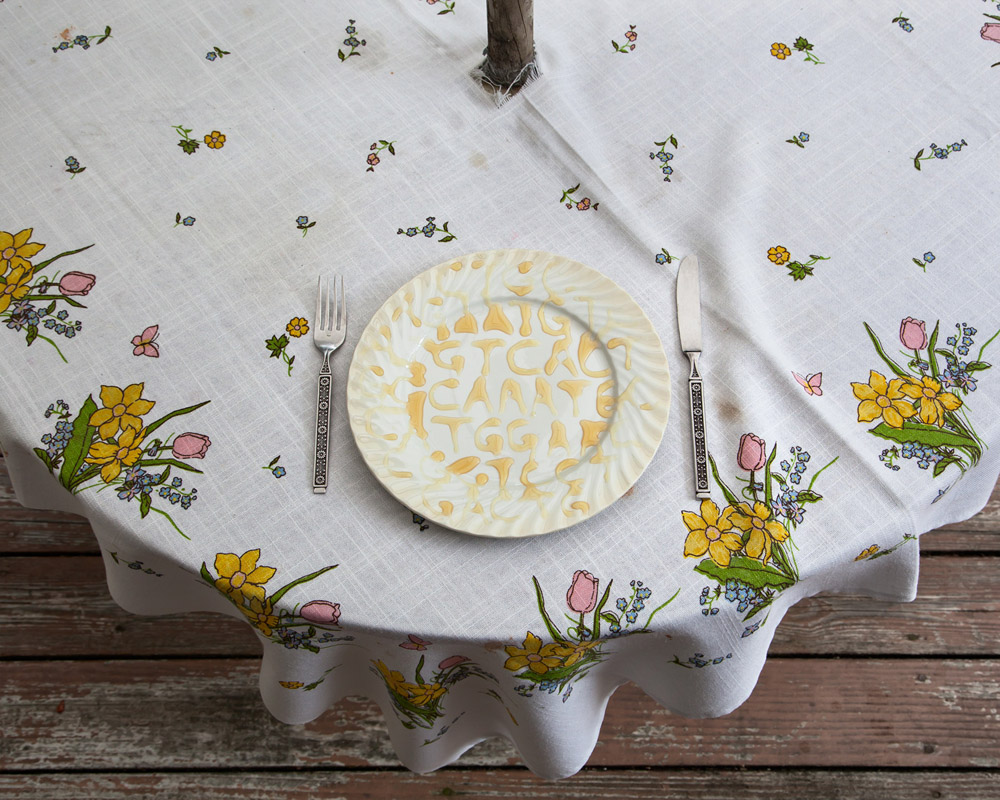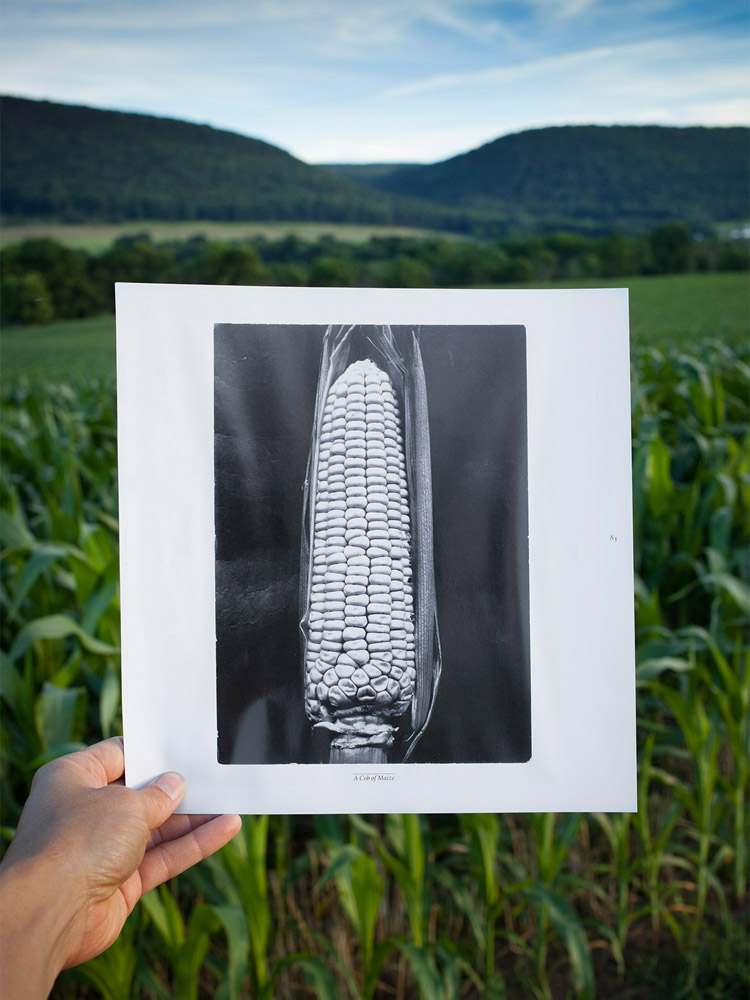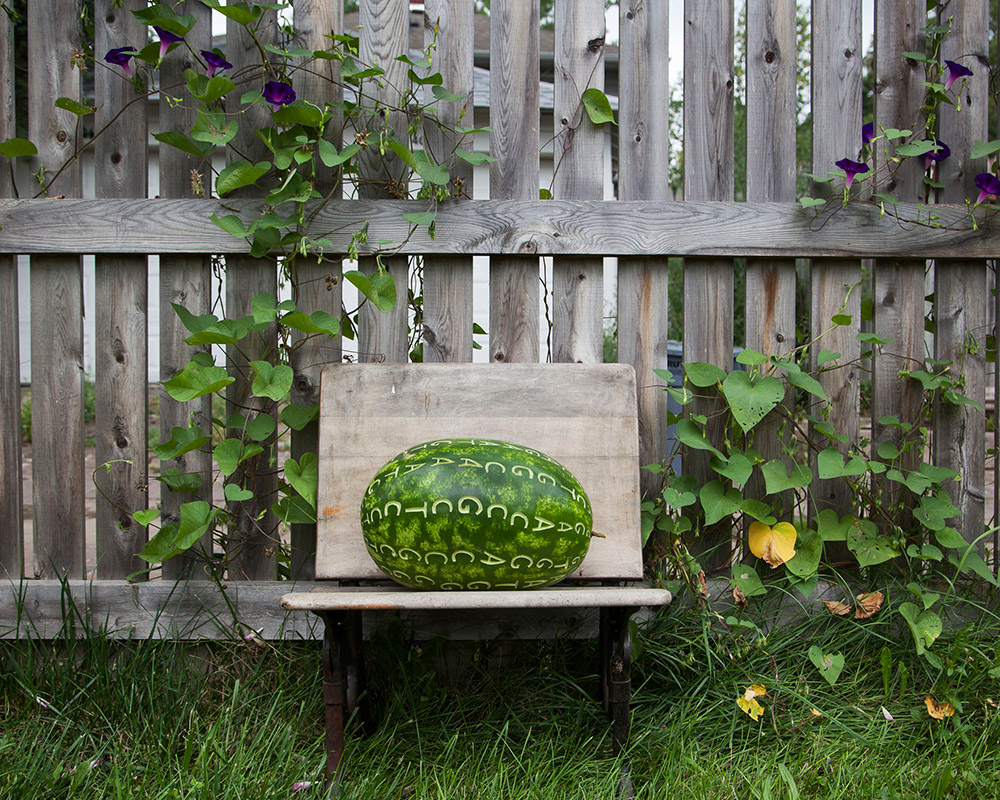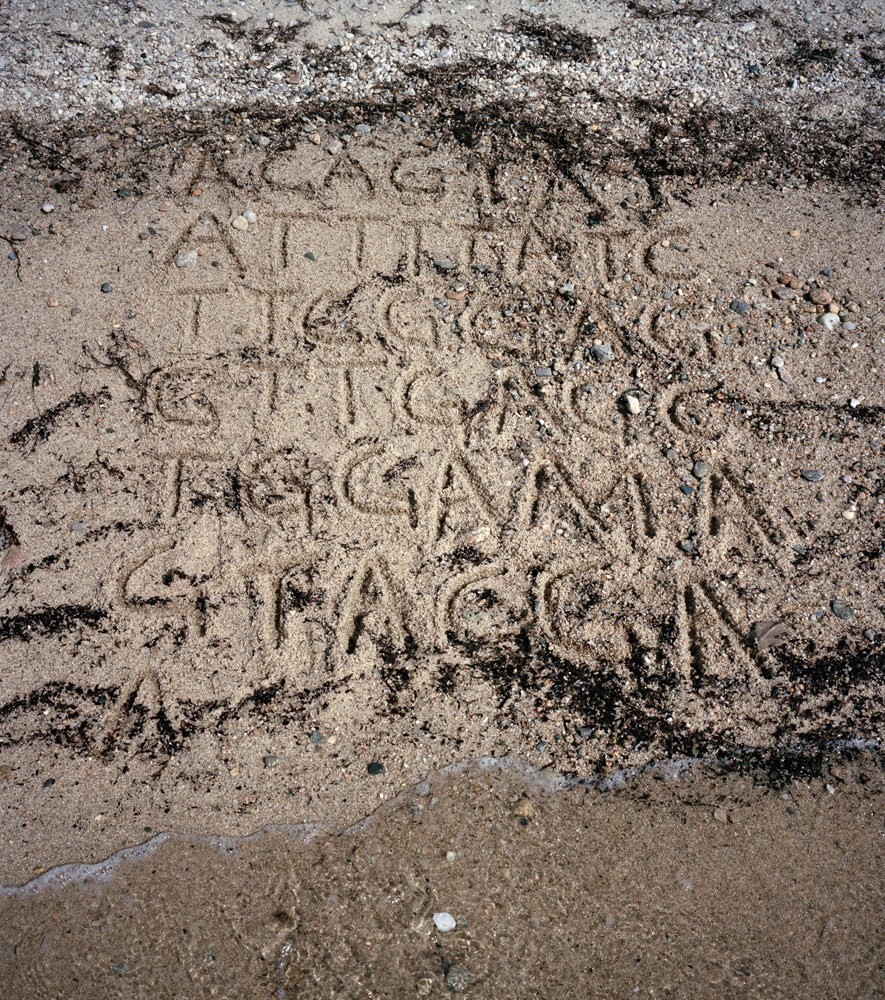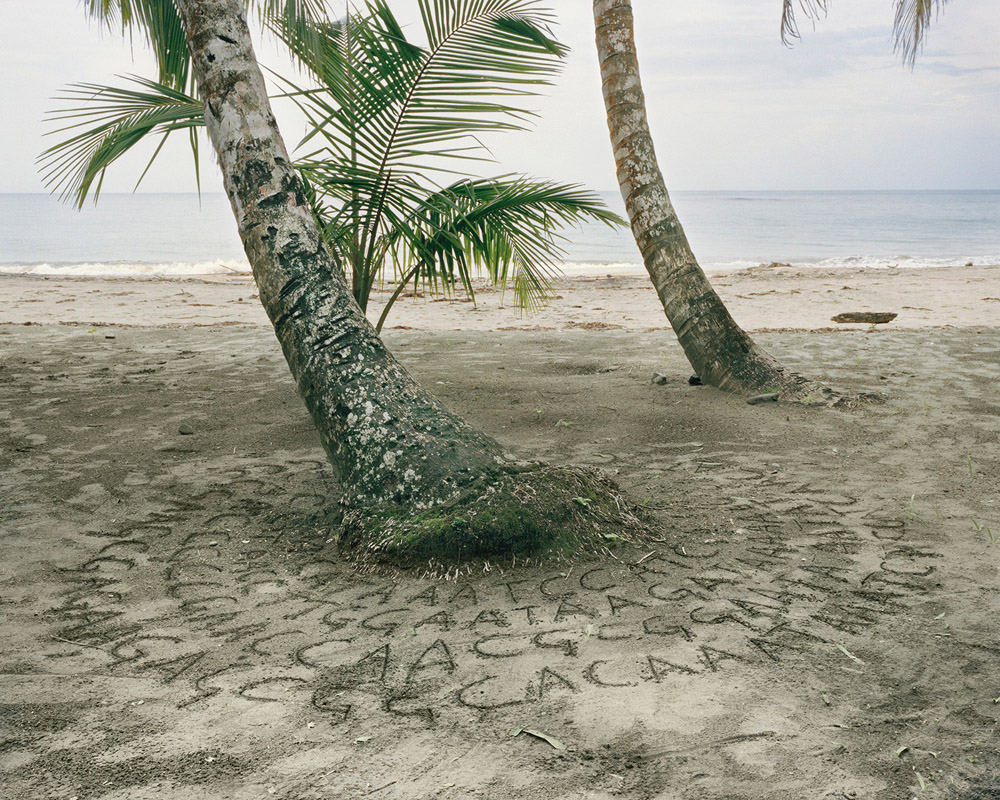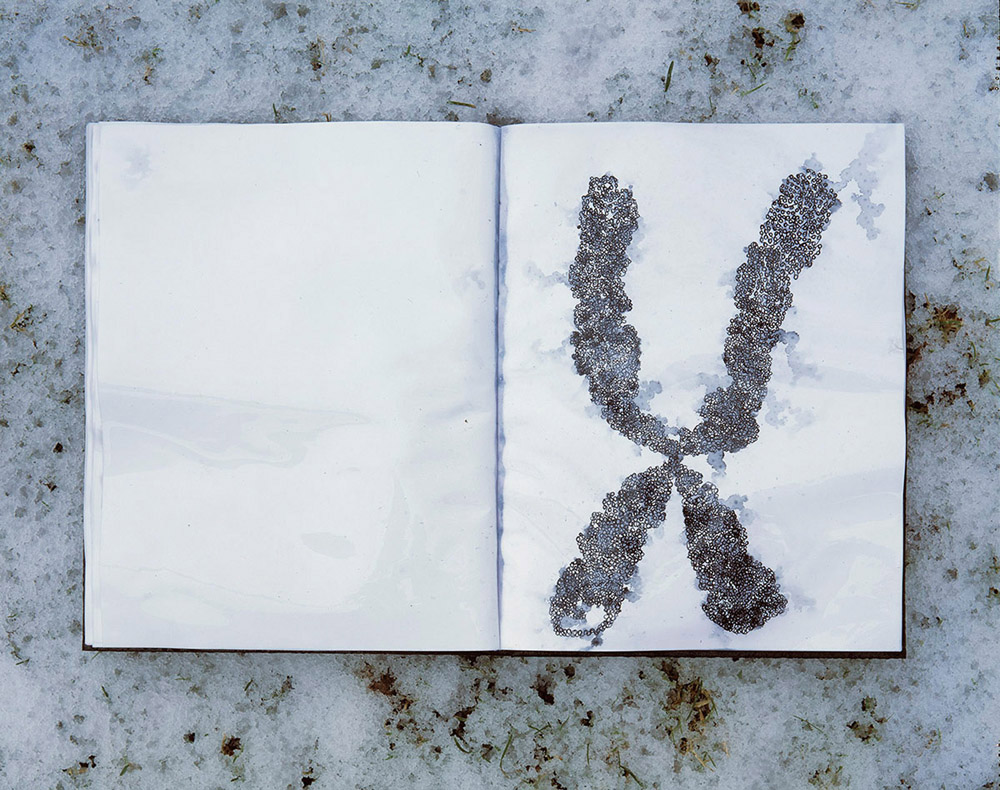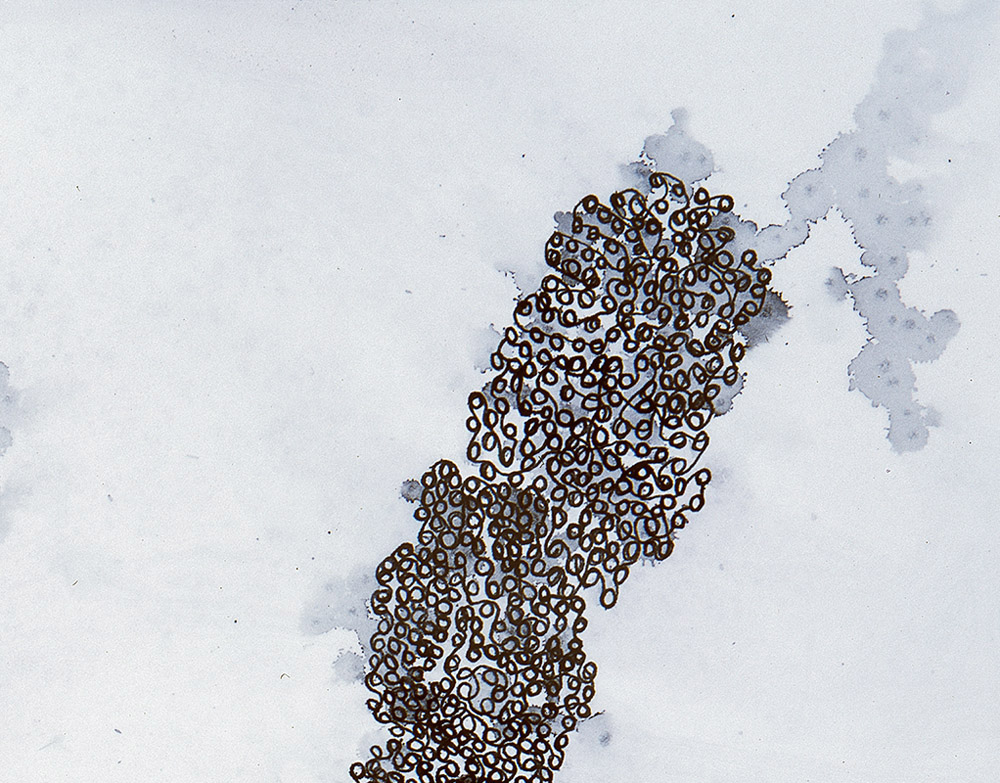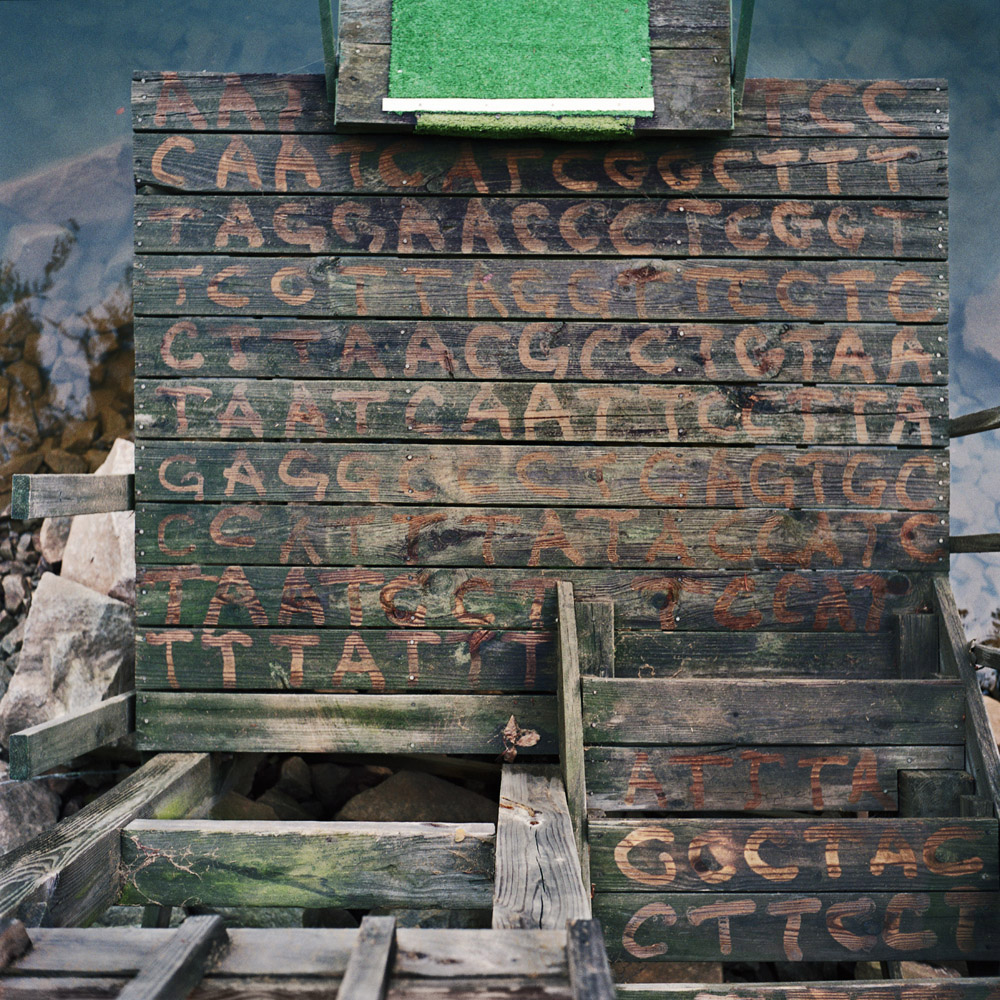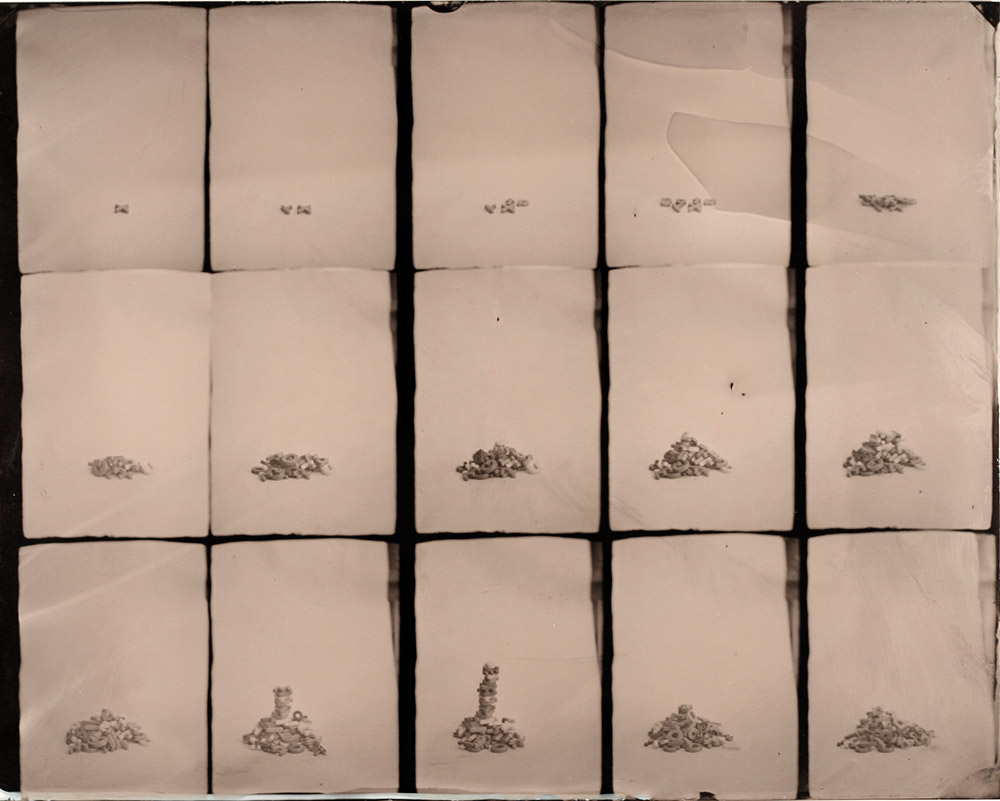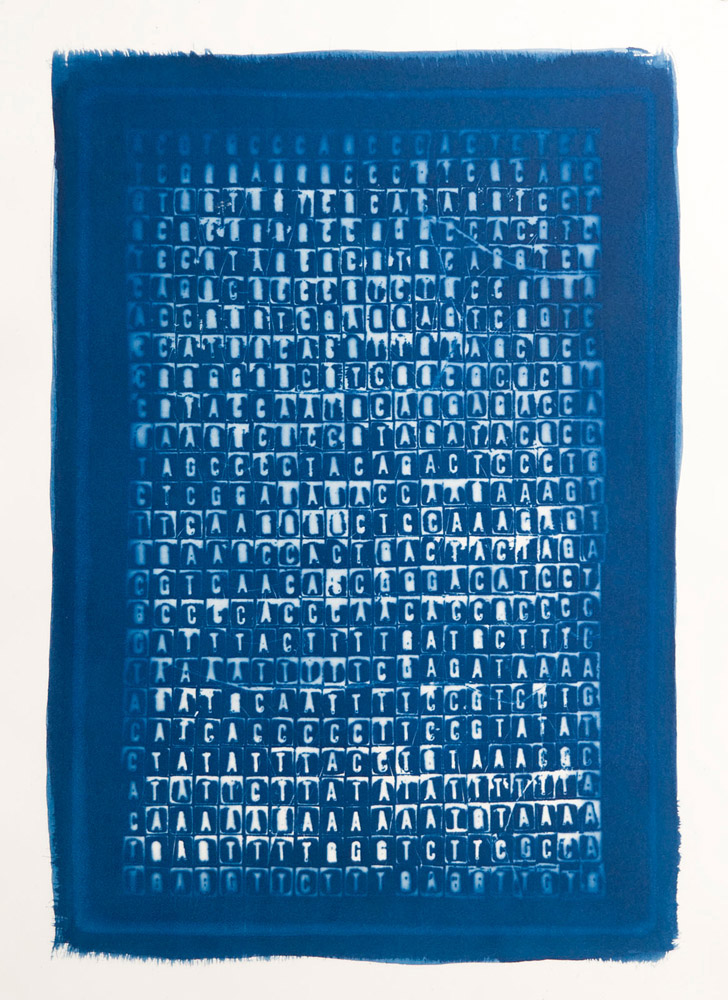Stefan Petranek: The States Project: Indiana
Stefan Petranek meticulously arranges text derived from DNA coding onto found elements (fruit, leaves, dilapidated wood), the landscape (beaches and lawns) and in structured piles. He uses alternative processes, digital manipulation, and a variety of materials to represent type: syrup, detritus from trees, the shearing of grass, or stencils and paint. At times, the importance of the process rivals the end product as he leaves tweezers in the scene or printouts of text that may offer clues to the origin of the system. Eventually, the DNA takes on the role of poetry, design, or even the monotony of writing sentences as punishment over and over to fill a space. All of it will disappear as the grass grows back, the tide rolls in, the paint fades, and the fruit browns. We define our lives by these scientific structures yet Stefan personalizes them to show individual identity in our everyday surroundings.
Stefan Petranek is an associate professor of Photography and Intermedia at Herron School of Art and Design in Indianapolis. His studio practice explores the intersections between nature, science, and society in the face of modernity. Influenced by his training as a biologist, his projects draw conclusions through experimentation and repetitive observation. Petranek’s photographic and video work have been exhibited widely in the U.S. as well as appearing internationally. Named a finalist in Critical Mass 2013, an exhibition of his Genotyping series was installed in 2015 at the Tulla Culture Center in Albania. His group exhibitions include the 2014 PhotoSpiva competition and Filter Photography Festival’s 2013 & 2014 annual exhibitions. Recently his Genetic Portrait Project Initiative was published in Front Line Genomics Magazine, and his Genotyping series will appear in Manifest Press’ photography annual INPHA3 in 2016. His Fossils series was included in Beyond/In Western New York 2010 and the book Water by Alphabet City Media/MIT Press in 2009. He is represented by Circuit Gallery in Toronto.
Genotyping
At its core, my genetic-based work is an exploration of how science filters our cultural understanding of nature. Through the lens of personal experience I find myself reexamining a familiar dialectic between nature and culture but from a contemporary context. Genetics is particularly well suited to this pursuit since its research generates palpable implications for us at both the individual and cultural levels.
In Genotyping, I am interested in exploring various ways we come to codify ourselves and our surroundings through scientific means. I use the four letter coding language science uses to describe the chemical coding of heredity (i.e DNA). By overlaying DNA onto the surface of various bodies I invite the viewer to consider how our definition of life is shifting. On the surface the work projects a formalistic fascination in the minuscule yet utterly complex internal systems that genetics seeks to decode, but layered in these works are more daunting questions about how genetics is redefining notions of personal identity, free will, and what constitutes life itself as genetic engineering becomes commonplace. In other words, does science’s quest to decode and make malleable life’s internal organizing structure deepen our cultural and personal understandings of life or cloud them?
Posts on Lenscratch may not be reproduced without the permission of the Lenscratch staff and the photographer.
Recommended
-
Salua Ares: Absense as FormNovember 29th, 2025
-
Ricardo Miguel Hernández: When the memory turns to dust and Beyond PainNovember 28th, 2025
-
Pamela Landau Connolly: Columbus DriveNovember 26th, 2025
-
KELIY ANDERSON-STALEY: Wilderness No longer at the Edge of ThingsNovember 19th, 2025
-
Jackie Mulder: Thought TrailsNovember 18th, 2025

